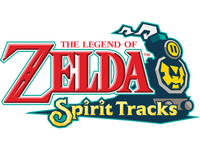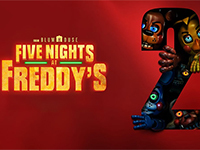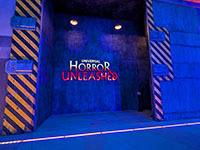 Though Spirit Tracks is far from innovative, it boasts enough improvement in gameplay and graphics over Legend of Zelda’s previous release on the Nintendo DS, Phantom Hourglass, to insure its success. Not every game has to be groundbreaking to entertain its audience. Spirit Tracks takes fans of the Zelda franchise into another quest to save Hyrule – this time with Zelda’s spirit accompanying and assisting Link along the way.
Though Spirit Tracks is far from innovative, it boasts enough improvement in gameplay and graphics over Legend of Zelda’s previous release on the Nintendo DS, Phantom Hourglass, to insure its success. Not every game has to be groundbreaking to entertain its audience. Spirit Tracks takes fans of the Zelda franchise into another quest to save Hyrule – this time with Zelda’s spirit accompanying and assisting Link along the way.The story, including why you need to visit the Tower of Spirits, is not particularly innovative, but it has a certain amount of charm. A few generations after the adventure of Link and Tetra in Phantom Hourglass, peace reigns in Hyrule with Princess Zelda ruling. That is until the trusted Chancellor calls upon the great evil, Malladus, to force Zelda’s spirit from her body in order to claim it for his own. Malladus had previously been imprisoned in the Tower of Spirits and was held there by the once-prolific spirit tracks (the rails your train rolls on). With Zelda being no longer in a corporeal form, Link must help Zelda restore the spirit tracks, defeat Malladus and reclaim her body. No problem, right?
The story supports the mechanic of not allowing you access to the entire world by restricting the amount of spirit tracks available to you. You two are not alone as there is a wide cast of characters that aid you along the way. The biggest of these are the Lokomos who teach you the ways of the spirit flute. A nod back to your trusty ocarina from the Legend of Zelda: Ocarina of Time, the spirit flute requires your breathing into the mic to operate. Perhaps the best addition to Spirit Tracks, the spirit flute is a useful tool without it ever being a nuisance. I was skeptical at first of constantly blowing air at my DS, but in the end, I enjoyed my time with the instrument.
When I say the graphics in Spirit Tracks are in a “Windwaker style,” a cringe and twitch is not an uncommon response from lovers and haters alike. For the uninitiated, Windwaker-style refers to a cartoony cel-shaded style of graphics that are not the high-resolution eye-bleeding many gamers are accustomed to seeing on PS3s or Xbox 360s. On the DS, this stylized graphical approach works extremely well. Even with the limitations of the handheld, Nintendo managed to surpass the looks of Spirit Tracks’s predecessor, Phantom Hourglass, and eke out a little more out of the system. This is something Nintendo excels at as the life cycle of one of their consoles grows over time.
Nintendo may not have built from the ground up on this title, but you can see and feel the effort they put in to further this series and what it has to offer on the Nintendo DS. This is significant because it is obvious that the DS is going to be around for a while. With last year’s release of the DSi and the announcement of the DSi LL, it is clear Nintendo has their portable gaming eggs in the DS basket.
The tactile controls and gameplay of Spirit Tracks is roughly the same as Phantom Hourglass, but as you progress in the game you notice how much tighter the battle/attack system is. No longer are targets missed by misclicks or unread taps by your stylus – even the big spin attack is easily deployed and controlled for maximum damage. Your vehicle’s cannon has been improved also, where, even at the fastest setting targets are quickly located and destroyed. While these features from the previous game have been improved, a new weapon in Link’s arsenal – the sand wand – is imprecise and unwieldy. The concept for the device is simple: click the place in the sand where you would like it to rise and form a solid block. Unfortunately, where you click is not where the block appears, the block one square up jumps to attention. This does not affect the gameplay overall as you aren’t punished for raising all the sand, but with so many other pieces sliding neatly into place, you notice it all the more.
When it comes to the dungeon-crawling, there have not been many games better than those in the Legend of Zelda series. This has led to the creation of a tried-and-true formula that has formed the backbone of each game since the beginning. Many will complain that the formula is over worn, that the “find dungeon, get new weapon, use new weapon to kill boss” needs to be freshened up. In Spirit Tracks you get that familiar feel in the major dungeons, but is changed up in the “Tower of Spirits.” Also, one of the major complaints of Phantom Hourglass is not repeated in Spirit Tracks: you’re not forced to retread the same ground over and over again. The floors in the tower themselves throw interesting and different types of puzzles without getting stuck in a particular theme. This made returning to the Tower of Spirits a fun change of pace rather than a chore.
Something I loved as much, if not more than, the main quest line was completing different tasks as side missions. Being an engineer in Hyrule is tough work and its citizens need your help. Whether it’s transporting passengers or hauling cargo, your engineering skills are put to the test in these brief tasks. The people you help will show their appreciation by rewarding you with force gems that restore some of that realm’s spirit tracks. While not absolutely necessary to complete, the new paths can lead to more treasure and more access to the collectible bunnies strewn throughout the world. These added tasks and side missions gave me a lot more time and enjoyment with the game and that’s never a bad thing.
The Legend of Zelda: Spirit Tracks is not going to bowl you over with brand new awesomeness. It is the apple pie amongst the specialty cakes and pastries. The gameplay is solid and will give you a good 10 hours of time rolling around Hyrule, especially if you help out some of the residents. Spirit Tracks is the best experience you will have on the Nintendo DS from last year. Bottom line: It is best apple pie you could possibly have.














































